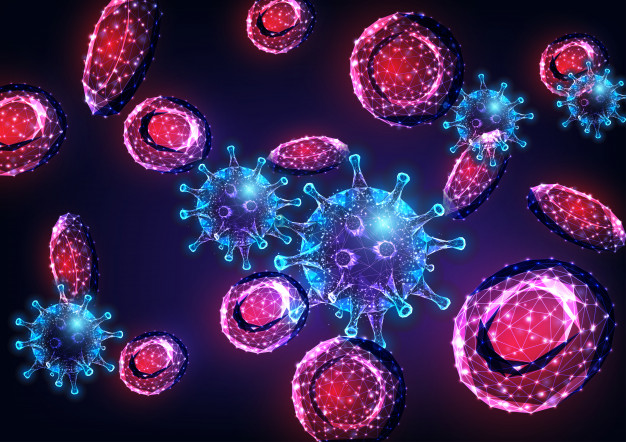- No products in the cart.
Viral Respiratory Infections
Home » Viral Respiratory Infections

There are several different types of viruses that can disrupt the pathways of breathing and cause respiratory disorders such as cold or flu-like disease.
Covid-19, Influenza virus, respiratory syncytial virus, parainfluenza virus, adenovirus, rhinovirus, human metapneumovirus, and enterovirus are some common respiratory viruses.
How viral respiratory infections spread ?
When an infected person speaks, coughs or sneezes tiny droplets containing infectious agents into the air, the viral respiratory infections spread. Those nearby can inhale the droplets in the air. The viruses often spread by direct contact with a sick person, or by indirect contact with hands, tissues, or other objects soiled by discharges of the nose and throat.
Enterovirus and adenovirus infections are often transmitted by hands or surfaces contaminated with infected faeces.
Signs and Symptoms :
Signs and symptoms differ depending on the specific virus which causes the disease. Many respiratory viruses cause symptoms that cause cold or flu-like diseases.
Signs and symptoms common to all include:
- fever
- cough
- runny nose
- sneezing
- sore throat
- headache
- muscle aches
- fatigue
Illness can also lead to complications. Forms of complications rely on the virus in question but can include:
- pneumonia
- bronchiolitis
- croup
- sinusitis
- meningitis
- encephalitis
Diagnosis :
Laboratory tests are not often necessary; however, a laboratory examination of mucus from the back of the nose or throat will confirm the infection.
Treatment :
There is no clear treatment for moderate respiratory viral infections. Many people regain an excess of fluids through rest and drinking. Paracetamol can be used for pain relief but must be used according to the directions of the manufacturer. Aspirin should not be prescribed to children under the age of 12 unless a doctor expressly advises.
Antiviral medication may be used for severe or prolonged respiratory viral infections such as infection with an influenza virus. Although sometimes prescribed, antibiotics do not help.
Prevention :
- Wash hands as soon as possible after sneezing or coughing and after contact with the discharges or soiled articles of the nose and throat from these. Use soap and water, or a hand rubbing based on alcohol.
- Cover tissue or arm for a cough or sneeze. Immediately disposing of the used tissues and then washing hands.
- Wipe all commonly touched surfaces daily with a detergent-dampened cleaning cloth, or with a large alcohol wipe.
- Stop sharing cups, plates, and utensils with individuals with respiratory infections.

